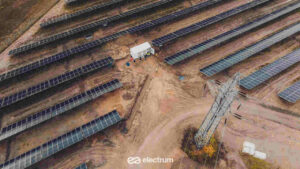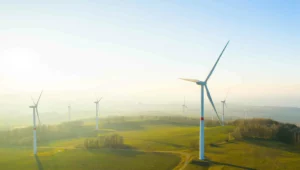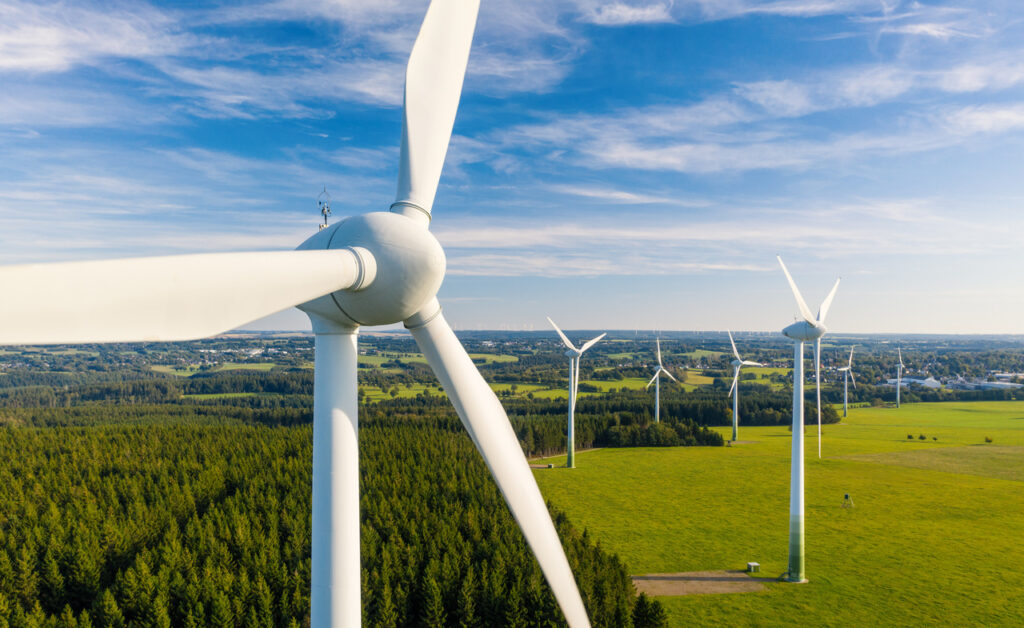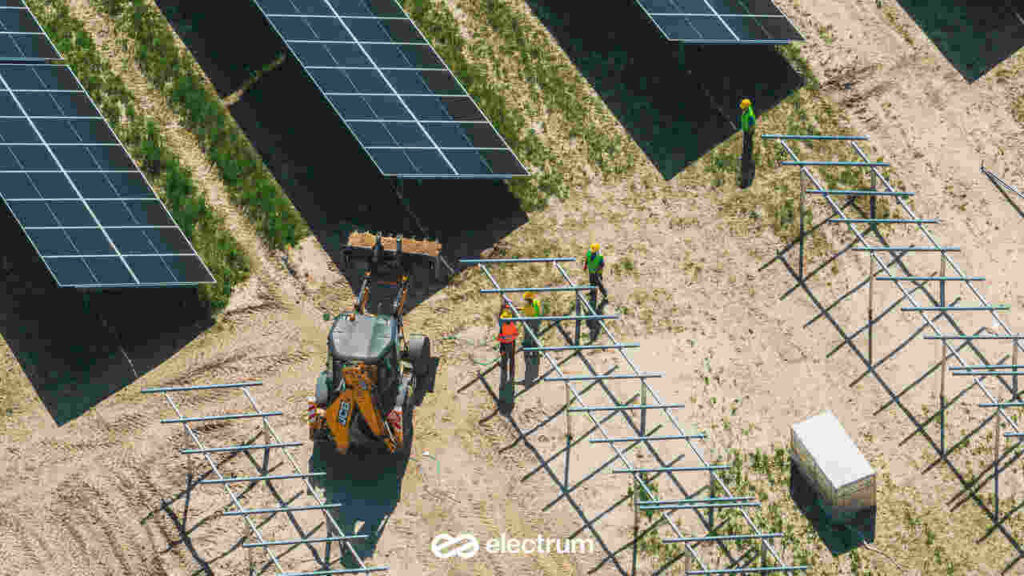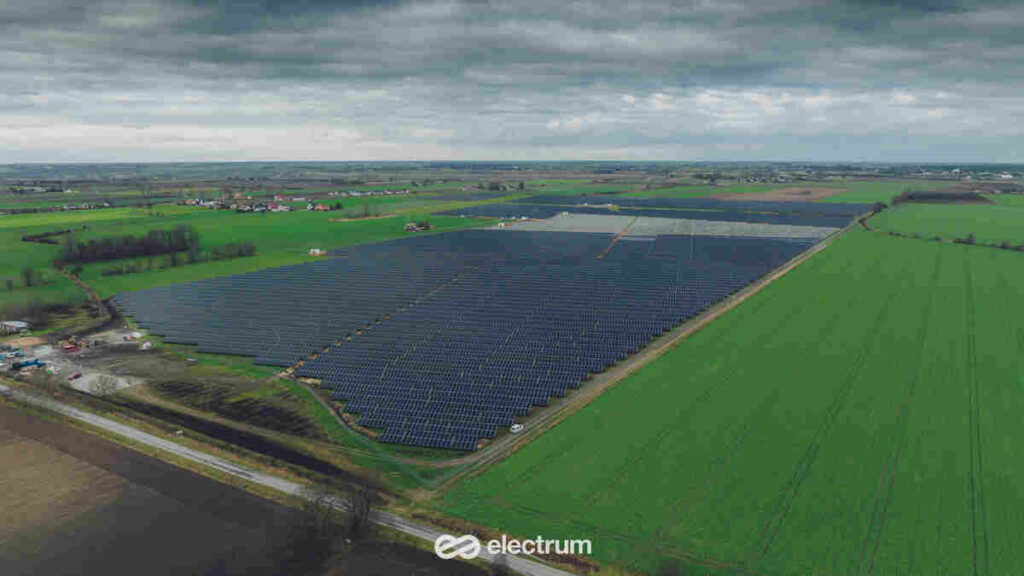Wind power plays a key role in today’s energy transition as one of the most efficient renewable energy sources available. However, the development of this technology involves more than just engineering or environmental issues – it also touches on important social, political, and economic processes.
As wind energy becomes increasingly significant, questions, concerns, and misconceptions often arise – especially at the local level – which can influence how such investments are perceived.
That’s why in this article we take a closer look at the most common myths about wind turbines. Our goal is to clarify the facts and provide reliable, evidence-based information – along with sources – to help better understand this technology and its real impact on the surrounding environment.
Common Myths About Wind Technology
Myth 1: Wind turbines produce harmful noise
Noise is one of the most common concerns raised by residents living near proposed wind power installations. However, it’s important to clarify that – thanks to modern technology and strict legal regulations – it is simply not possible to build a wind farm that would have harmful health effects on people living nearby.
When it comes to health and noise, it’s worth highlighting a comprehensive study conducted by scientists from the Polish Academy of Sciences. Their findings were published in the report “Wind Power Plants in the Human Environment”, a joint effort involving 37 researchers.
Noise levels around wind farms have been carefully monitored and tested over the years. The conclusion? Modern wind turbines, when placed at a safe distance, do not produce continuous noise at levels harmful to human health.
At the currently proposed minimum distance of 500 meters between a wind turbine and residential buildings, the sound level does not exceed 40 dB (decibels). This is well within safe standards and does not pose a risk to health. For comparison, this level of sound is similar to the ambient noise in a quiet library.
To better understand how much noise a modern wind turbine generates, it helps to compare it to everyday household appliances:
The conversation – 60 dB
The fridge – 45 dB
The vacuum cleaner – 55 dB
The clock – 35 dB
Moreover, environmental noise standards are stringent – 40–45 dB at night and 45–55 dB during the day (in accordance with the Regulation of the Minister of the Environment*).
*The Regulation of the Minister of the Environment of June 14, 2007, on permissible noise levels in the environment is a legal act that applies, among other things, to wind turbines. This document specifies the maximum allowable noise levels for different types of areas, including residential zones.
Myth 2: Wind turbines generate harmful infrasound
After noise, the next issue is harmful infrasound, which has become a key element of many anti-wind farm campaigns. These are sound waves inaudible to humans, surrounding us daily and naturally present in our environment. According to experts, as stated in the PSEW (Polish Wind Energy Association) brochure “Wind Energy Facts”, the infrasound generated by wind turbines is not harmful to health.
This is confirmed by scientific and field studies. As early as 2009, the American and Canadian Wind Energy Associations established an international, interdisciplinary research team composed of independent specialists in acoustics, audiology, medicine, and public health. Their research showed that infrasound at levels typical of wind turbines has no adverse health effects.
“Measurements of infrasound generated by wind farms indicate that their levels do not exceed the hearing threshold for this frequency range,” says Dr. Eng. Ryszard Ingielewicz (Department of Structural Mechanics, Faculty of Civil, Environmental, and Geodetic Engineering, Koszalin University of Technology), as quoted in the aforementioned PSEW brochure. “Infrasound levels from wind farms are lower than or comparable to those from typical natural sources of infrasound, such as the sound of the Baltic Sea or wind-induced forest noise, and therefore pose no harm to human health.”
Myth 3: Wind turbines generate electromagnetic fields harmful to health
Another issue is the electromagnetic field (EMF). While this phenomenon can be harmful under certain conditions, wind turbines emit only very low levels of electromagnetic radiation. Moreover, all electrical infrastructure related to wind farms is designed and built in a way that prevents any negative impact on human health.
Here, it is worth referring again to research by experts from the Environmental Engineering Committee of the Polish Academy of Sciences (PAN).
Their findings state that in the case of wind farms, “transformers and distribution equipment are positioned in such a way that no person can come close enough (due to barriers and fencing) for the generated electromagnetic field to cause any health consequences.”
Engineering teams at the Electrum Group design and construct wind farms with the highest regard for the safety of nearby residents – the internal electrical network and all farm infrastructure are built in compliance with regulations applied to power cables used in municipal and industrial energy systems.
As a result, the electromagnetic field generated by operating wind turbines remains at a level that – according to Polish standards – poses no risk to human health.
Myth 4: Wind turbines are a significant cause of bird deaths
The last of the most widespread myths about wind energy is the belief that wind turbines significantly contribute to bird mortality. While occasional collisions do occur, the scale of this issue is often exaggerated and incomparably smaller than other human-related threats—such as road traffic, power lines, buildings with glass facades, or domestic cats. This is clearly illustrated in the chart below (based on “A Summary and Comparison of Bird Mortality from Anthropogenic Causes with an Emphasis on Collisions”):
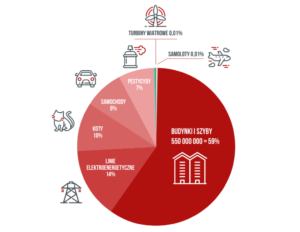
A Summary
Wind energy projects are designed and implemented in full compliance with all legally established and scientifically validated guidelines aimed at protecting both the health of residents living near wind farms and the surrounding natural environment.
At Electrum Ventures, we make every effort to ensure each project is executed with respect for local environmental conditions and complete transparency toward the communities where we operate.
We understand that new investments naturally raise questions and concerns – this is only to be expected.
That’s why we are committed to open dialogue and actively participate in meetings with local residents to:
-
Dispel myths about wind energy,
-
Present reliable data,
-
Listen to the voices of local communities.
Our goal is not just to develop green energy, but also to build trust and foster lasting, responsible relationships with people who will live alongside modern energy sources every day. We believe that only through honest cooperation can we create solutions that benefit all stakeholders.
Sources:
A Summary and Comparision of Bird Mortality from Antropogenic Causes with an Emphasis on Collisions; Wallace Erickson, Gregory Johnson, David Young Jr.
Elektrownie wiatrowe w środowisku człowieka, Wydawnictwo Polskie Akademii Nauk, A. W. Jasiński, P. Kacejko, K. Matuszczak, J. Szulczyk, A. Zagubień
Energetyka Wiatrowa Fakty, Polskie Stowarzyszenie Energii Wiatrowej
Rozporządzenie Ministra Środowiska z dnia 14 czerwca 2007 r. w sprawie dopuszczalnych poziomów hałasu w środowisku
